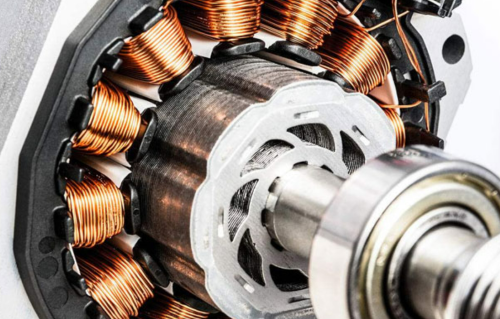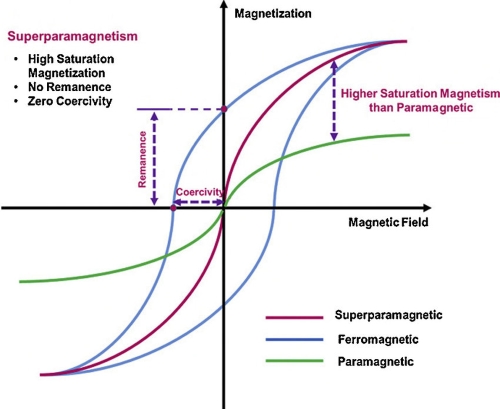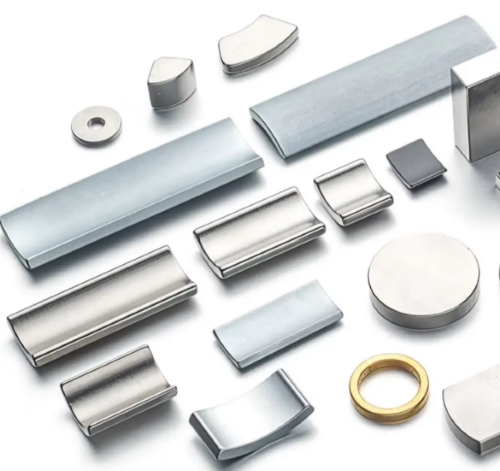Samarium Cobalt Magnets: Features and Applications
Introduction
Samarium cobalt magnets are permanent magnets. They are one of the rare-earth magnets and are typically made from Samarium and Cobalt. In the production of this magnet, the Samarium portion can be replaced with cerium, praseodymium, and gadolinium, while the cobalt portion can be replaced with transition metals. This magnet was formulated by Karl Strnat and Alden Ray in the early 1970s. Samarium cobalt magnet is the first rare-earth magnet to be used commercially. Before the invention of this magnet, the Alnico magnet was more widely used.
 Samarium Cobalt Magnets
Samarium Cobalt Magnets
Types of Samarium Cobalt Magnets
Samarium cobalt magnets are classified into two based on the ratio of samarium to cobalt used during production.
SmCo5
In this type of samarium cobalt magnet, the ratio of samarium to cobalt is 1:5. This means five cobalt atoms are used for every atom of samarium used. This type of samarium cobalt magnet was discovered before the other type. However, it is no longer used frequently because the second type of samarium cobalt magnet has overtaken it. Its maximum energy product is 15 to 24 MGOe. This type of samarium cobalt magnet is highly resistant to corrosion.
Sm2Co7
In this type of samarium cobalt magnet, the ratio of samarium to cobalt is 2:7. This implies that two samarium atoms are added per seven atoms of cobalt. Although this type of samarium cobalt magnet was discovered after SmCo5, it has gained wider popularity for being stronger. Its maximum energy product is 20 to 32 MGOe. The downside of using this type of samarium cobalt magnet is that it is susceptible to corrosion when it comes in contact with water because it contains traces of iron.
Features of Samarium Cobalt Magnets
Samarium cobalt magnets are remarkably strong permanent magnets. They are resistant to high temperatures and are most efficient at temperatures between 523 K and 853 K. In addition, samarium cobalt magnets are resistant to corrosion, oxidation, and demagnetization. The Curie temperature of these magnets is 1098 K. Their density is 8.4 × 103 kg/m3. Another notable property of samarium cobalt magnets is their electrical resistivity. Their electrical resistivity is 0.8 × 10-6 Ωm. Also, their bending strength is 1.2 × 103 kg/m2, and their compressive strength is 9.1 × 103 kg/m2. This rare-earth magnet is brittle and can easily break or crack when stressed. Samarium cobalt magnets are anisotropic. This means they have a preferred magnetization direction. Outside their magnetization direction, they cannot be magnetized.
Advantages of Samarium Cobalt Magnets
Samarium Cobalt magnets have several benefits that make them useful in many industries. Here they are:
- SmCo5 magnets are resistant to corrosion. This means they do not require any form of coating to protect them from corrosion.
- Samarium Cobalt magnets are resistant to high temperatures. This means they can be used to work over varying temperatures.
- The materials needed to make Samarium Cobalt magnets are more easily accessible than those used to make other rare-earth magnets like neodymium iron boron magnets.
Disadvantages of Samarium Cobalt Magnets
Despite their numerous advantages, samarium cobalt magnets still have some disadvantages.
- Samarium cobalt magnets are more expensive to purchase than neodymium iron boron magnets.
- Sm2Co7 magnets contain traces of iron and are susceptible to corrosion when in contact with water.
- Samarium cobalt magnets are brittle. They break easily and crack if not handled with care.
- Samarium cobalt magnets have low mechanical strength when compared to neodymium iron boron magnets.
Application of Samarium Cobalt Magnets
Samarium cobalt magnets are applied in various industries around the world. Some of their properties make them well-suited for specific industries.
Sensors
Samarium cobalt magnets are used in sensors. These sensors are concerned with converting a magnetic field into electrical signals. The sensors are usually used in aerospace and automobiles.
Generators
Samarium cobalt magnets are used in generators. The samarium cobalt magnet provides the magnetic field for the generator. These generators are reliable and can be used in wind turbines.
Refrigerators
Samarium cobalt magnets are fast becoming popular in the refrigeration industry. Massachusetts Institute of Technology is currently researching how magnets can be used as refrigerants.
Nuclear Magnetic Resonance Spectrometer
Samarium cobalt magnets are also used in NMR spectrometers. In NMR spectrometers, magnets are used to investigate the spin of protons and neutrons. NMR spectrometers are used to study both the physical and chemical properties of organic compounds.
Medicine
Samarium cobalt magnets are used in medical equipment that require high temperatures for sterilization. This is because samarium cobalt magnets are stable under high temperatures. They are also used for medical implants.
Conclusion
Samarium cobalt magnets are a common type of rare-earth magnets used widely in sensors, refrigerators, power generators, and medical applications. There are two types of samarium cobalt magnets, with each type having a unique set of properties and applications in various industries. For more information, please visit https://www.stanfordmagnets.com/.















